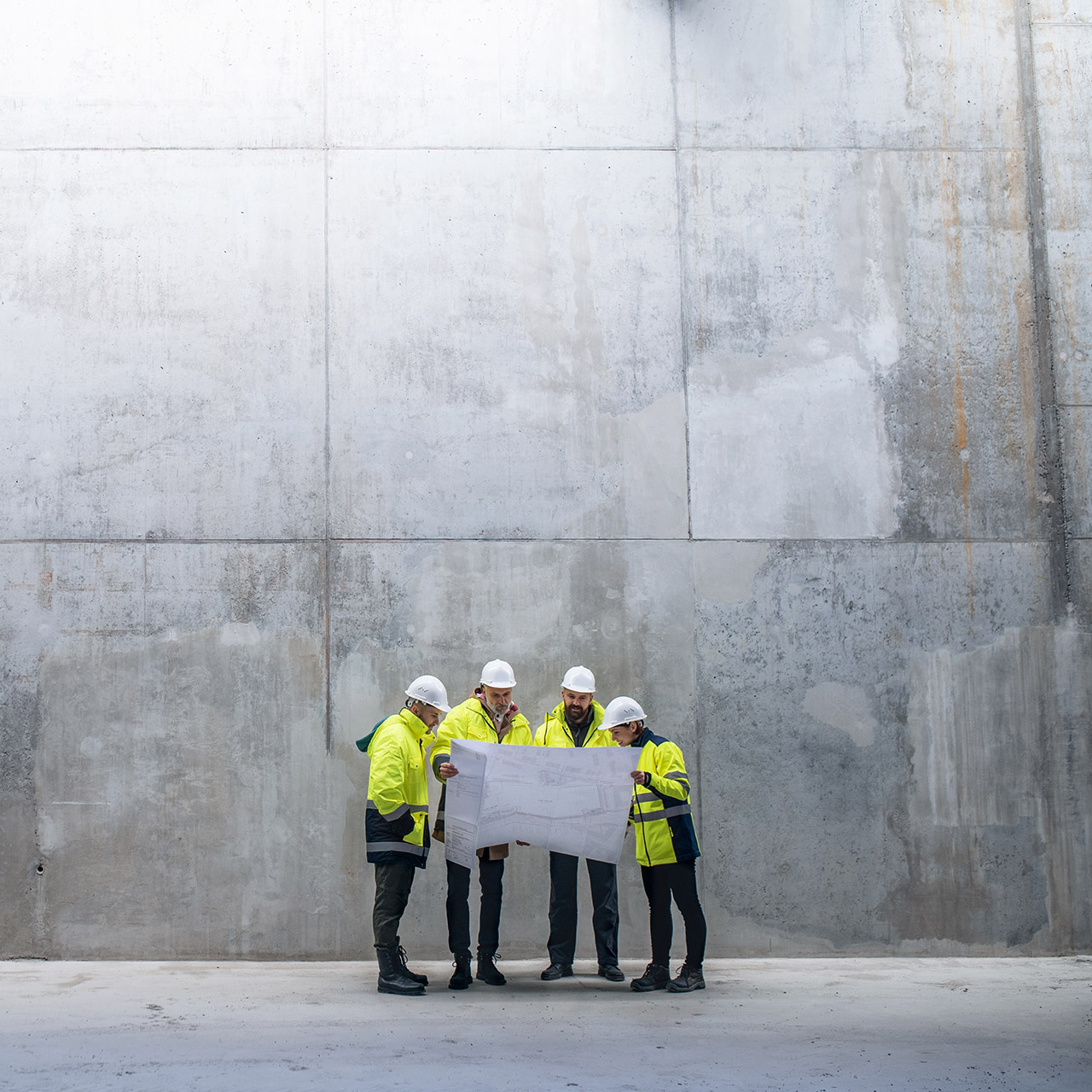The opportunities and challenges that lie ahead for the construction industry will be successfully navigated by those with the foresight to prepare for them with technology that boosts agility, efficiency, and understanding so they can make smarter decisions, faster. That’s the takeaway from two new reports that look at current market conditions for contractors, as well as the reasons for both optimism and caution in the months and years to come.
With that in mind, let’s look at what’s on the horizon for contractors in 2023 and beyond, and then we’ll look at some technology you can use to position your construction business for success.
Market Conditions
One of the key differences about this year compared with last year is that thanks to changing market conditions, expectations for public sector construction opportunities are much higher than for private sector segments.
The underlying factors influencing those expectations include everything from higher interest rates to the shifting work and shopping patterns that are influencing demand for office, retail, hospitality and multifamily residential construction.
According to survey results from the Associated General Contractors of America (AGC), on the whole contractors are still generally optimistic about the construction outlook for 2023, even if their expectations are down a little compared with 2022. In fact, they expect demand for construction to pick up in almost all market segments.
That’s largely because contractors are expecting to see the benefits of new federal investments funded by the Infrastructure Investment and Jobs Act (IIJA), the Inflation Reduction Act (IRA), and the CHIPS and Science Act.
As noted by Deloitte in its 2023 engineering and construction industry outlook report, market dynamics suggest that there will be differentiated growth rates for different industry segments.
This idea is reinforced by the AGC survey:
- Respondents are most optimistic about opportunities related to infrastructure like highway and bridge construction, as well as transportation projects like transit, rail and airports, as well as sewer and water construction.
- Public buildings are one category where contractors are slightly more optimistic than they were a year ago.
- For the private sector, expectations are most positive for power projects and non-hospital healthcare facilities, such as clinics, testing facilities and medical labs, as well as a generally optimistic outlook about hospital projects.
- Contractors are also largely optimistic about the education sector, including elementary and high school buildings, as well as higher education facilities.
- Segments like manufacturing construction, data centers and warehouses are still looking positive on balance, but expectations have dampened a bit since last year.
- Expectations are less optimistic for multifamily residential construction, and “bearish” for lodging, private office buildings, and retail construction.
It’s also worth noting that even though contractors are generally optimistic about growth in demand for new federally funded infrastructure projects, not many have been awarded projects yet. This is possibly due to delays caused by regulatory hurdles and the lack of clarity about things like which building materials are covered by the new Buy America regulations.
Contractors’ Top Concerns: Labor, Supply Chain, Rising Costs and More
Although market conditions have changed, many of the challenges facing construction firms are familiar, and include headwinds like the ongoing shortage of talented labor, the volatility of the supply chain, material costs and economic uncertainty.
Talent Shortage
Most construction firms are expecting to add workers to their rolls in the foreseeable future, thanks to higher demand for projects. In fact, more than two-thirds of the respondents to the AGC survey are planning to add headcount. However, finding the skilled workers they need continues to be the sticking point. Eighty percent of respondents say they’re having a difficult time filling some or all of their open positions. That may make it hard for firms to tackle all of the projects that come their way.
Supply Chain
More than three years into the pandemic era, bottlenecks in the supply chain continue to be a major source of stress and disruption for contractors, with fewer than 9% of AGC respondents saying they didn’t have any significant supply chain problems in 2022.
Rising Costs and Interest Rates
The increasing cost of materials, financing, and insurance, combined with rising interest rates, create all sorts of ripple effects. Beyond just putting a squeeze on budgets, they also lead to project delays and cancellations. Two-thirds of AGC respondents reported delays or cancellations in 2022, and 13% had already experienced a canceled or postponed project that was scheduled to begin in the first half of 2023. Nearly half of contractors cited rising costs as the main culprit behind those disappointments.
Sustainability
Sustainability is another increasingly important trend. As Deloitte notes, “Many customers are becoming more sustainability conscious and placing greater pressure on developers to lower the carbon footprint of new construction. The increasing global focus on climate change could incentivize construction companies to factor sustainability into their projects, construction processes, and designs.”
The Construction Industry and Technology
In responding to these conditions, the key word for contractors is preparedness. As Deloitte puts it in its report, “preparedness could be crucial to navigate volatility” in the immediate future.
One overriding factor that can help you achieve the preparedness you need to be able to respond to whatever the market throws at you.
Many contractors in the construction industry have been slow to adopt new technology. According to the AGC report, about 40% of firms said it was hard to find time to implement and train on new tools. Nearly the same number said employees are resistant. Other challenges include data security and connecting to remote job sites.
These challenges are reflected in the numbers; between a quarter and a third of those in the survey plan to increase their investment in technology in 2023. But those that are investing are focused on efficiency and mitigating vulnerabilities to supply chain challenges and labor shortages.
For example, document management and project management tools were at the top of contractors’ lists. Other preferred uses for technology in 2023 include daily field reports, employee time tracking and approval, and sharing project documents or job information from the field.
The key to not just coping with the challenges right in front of you, but surmounting them and even turning them to your advantage, is to embrace digital transformation by implementing the kind of technology that makes your business more agile, resilient and adaptive to changing circumstances.
That means making sure you’re not slowed down by legacy systems, and instead are positioned to take advantage of the powerful capabilities that modern ERP systems enabled by AI, machine learning and the cloud can deliver.
Some of the benefits of investing in the right technology tools come simply from moving your data out of silos and legacy systems and moving it into a centralized repository. This helps improve communication and efficiency while also promoting collaboration, as team members throughout your business have access to the same data in real-time, which gets everyone on the same page. Having access to better data and insights also leads to smarter and more agile decision-making.
Microsoft Dynamics 365 Business Central is a great example.
It offers helpful tools and capabilities, including:
- Inventory and Supply Chain Management. Business Central can help you deliver on time and adapt to changing business conditions by providing visibility into your entire supply chain, from start to finish.
- Subcontractor Management. Business Central can make managing the subcontractors on your job sites simpler. For example, Business Central connects systems in your office to devices on-site, giving you real-time visibility into project progress and timelines.
- Timelines and Scheduling. Business Central’s scheduling tools help you visualize project timetables to keep projects moving ahead smoothly.
- Real-time Analytics. Business Central brings you real-time performance metrics and reporting, which can help you better understand the data that’s available to you, so you can improve your forecasting and decision-making.
- Cash Flow Forecasting. Business Central allows you to set up a forecast that draws on multiple sources of information, including general ledger, purchasing, sales, service, fixed assets and manual revenues and expenses.
- Customer Payments. Business Central’s machine learning and predictive analytics can analyze payment patterns and identify which customers may have difficulty making timely payments on time. This allows you to set up proactive communication strategies to help keep those customers aware of deadlines well ahead of time.
And in a time when hiring is a challenge, one of the best benefits of Business Central is that it can help you automate low-level, repetitive tasks, which frees up your team members to focus their time and energy on higher-level work where their talents are needed.
Give Your Company a HEAD START
While Business Central offers benefits for businesses in all kinds of industries, construction firms can take advantage of a specialized solution that extends and customizes Business Central’s benefits, with tools that are geared to both general and trade contractors.
Business Central for Construction provides you with a construction management solution, including powerful, comprehensive financial management capabilities that allow you to track project profitability in real-time.
From productivity and collaboration, to project, financial and resource management, Business Central for Construction helps you streamline processes, stay on top of job costs, and improve labor productivity and tracking.
Some of Business Central for Construction’s capabilities include:
- Project Management
- Job Quoting and Proposals
- Job Material Planning
- Job Cost Accounting
- Subcontract Management
- Field Service Management
- Contract and Change Orders
- Progress Billing
- Payroll Integration
Find out more about Business Central for Construction and the capabilities listed above on our Construction Industry ERP Software Solutions page.
Want to learn more about how Sikich can help you optimize your systems and software? Reach out to us today.








